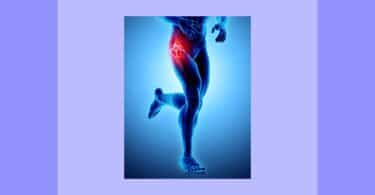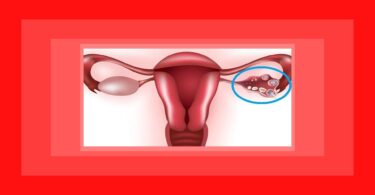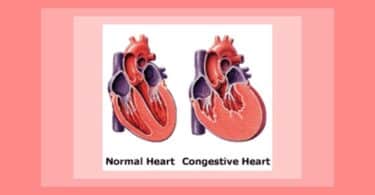A 28-year-old lady, a B.Sc graduate, married for over three years came to the other song with the complaint of infertility in August 2011. She consulted Dr. Jayesh Shah, Senior Consultant and Faculty, the other song and his Resident Doctor, Dr. Pallavi Mahadeshwar. The patient had already undergone left oopherectomy due to a huge left ovarian cyst and had many cysts in her right ovary, due to which she was unable to conceive over the past two years.
On asking her to describe her problems, she started narrating them sequentially; detailing the onset and progression of her complaints time wise and also systematically charted out the treatment she had received for each. She was first diagnosed as having ovarian cyst in 1994, when she had severe pain. She also had a history of prolapsed intervertebral disc in the past, the symptoms of which were ameliorated by conventional medicine.
Though she was thorough in outlining her complaints and the treatment, she could not yield any peculiar symptoms individually. She was then asked what was it that bothered her most of all the complaints. To this she replied that the issue of not being able to conceive despite repeated efforts and treatment was bothering her the most. She said, “A woman marries then she has to have a child; and since this is not happening I feel guilty. It makes me feel that I am not an ideal daughter-in-law and wife. What must my in-laws think of me?”, and started weeping. She could not add anything when asked to describe this guilt.
The doctors then tried various means through which she could dissociate from her present situation and talk about her experience. This is usually very handy in cases to find out the peculiar experience of the person or their innermost nature, when they generally limit their disease to a fact level. This was not of much use in her case. She was then asked various questions which would elicit more about her as a person and her overall state like – How did this situation feel to her? How did it affect her? What was the worst possible outcome that she imagined of the present situation? However, the patient could not answer any of these questions.
To elicit something characteristic about herself and her complaints, she was asked to go back in 1994 and describe her complaints when she was first diagnosed as having an ovarian cyst. The patient said that she had severe pain at the time and she would weep with the pain and lie down, as nothing helped her then. She was unable to describe the character of pain, any modalities and the associated state or feeling with the severe pain. Her gynaecologist said that she may have to undergo an operation for the cyst and she was very afraid that the surgery would scar her body. When she was asked to describe her complaint with the slipped disc, she said that she only remembered the pain being better by warm water.
The patient was then asked to describe more about herself as a person. She said that she was very indecisive about all things and that she tended to find a middle path along which there would be no loss in terms of job or family. She always made sure that she never hurt someone emotionally or financially, so in the process she had to adapt and often gave up what she desired. She wanted everyone to be together so that she could share her thoughts and problems with everyone. She felt that she should always have someone who can listen to her and help her and that she should never be alone. She was again unable to describe the deeper feeling about alone and togetherness. When asked about her dreams, she spoke of her childhood dream in which she saw an IPS officer’s car with a red hood light over it. She always desired to become an IPS officer herself and had tried twice for the same, but with no success, so she shifted to computers as her field of study.
Talking more about her childhood, she said that she was the oldest child in the family and had to take care of her younger siblings so she always had an adjusting nature. Being the oldest child in the family, she had always to do the right thing and hence she was always caught up if she should do this or that. Even as a child, she would always choose a middle way, so that no one would be hurt and so that she could avoid contradictions. She had great support in her father who helped her make decisions and never reprimanded her when she was mistaken.
Her husband added that she was a very good care giver. He also added that the patient was career oriented. But when asked what she was doing, she said that she was just managing household chores for now, being on the lookout for good work opportunities. She said that often in order that things are good and properly managed, she had to give up her wishes. When asked about her menses, the only thing that came up was pain in the feet during menses. Besides she had a craving for potatoes and she liked covering when sleeping. She loved travelling by bike and enjoyed feeling the breeze.
Dr. Jayesh Shah then through a meditative approach, asked the patient to meditate and to focus / imagine her childhood days. During this, she remembered her birthday as she felt very important in front of all family as she was the eldest child, but could not describe it any further. When in the process, she was asked to look into/ imagine her future she said that she saw herself being a mother, but was confused as she did not know what to do.
Some other symptoms noted from her case record form were:
- Headache from hunger
- Leucorrhea thick, white, transparent
- Fear of darkness
- Very calm person, I don’t get violent
Her investigation were as follows:
1)CBC (01/01/2010)
M.C.H. 24.0
M.C.H.C. 29.3
R.D.W.CV 15.2%
ESR 32
- Serum FSH (01/01/2010) 35
- Serum LH (01/01/2010) 30
- Serum Prolactin (01/01/2010) 64
- USG Abdomen (01/01/2010)
Impression: Rt. Ovary is polycystic in morphology.
Left ovary is not visualized.
Small cervical nabothian cysts.
Understanding:
The first thing that was most apparent about the patient was the fact that she was so systematic and detailed in eliciting her physical complaints in the form they progressed and were treated. This systematic mindset, is the first soft hint towards the mineral kingdom as the main issue of the mineral remedies has to do with structure.
The patient was very indecisive and she always chose to be on the middle path so that she was safe. This has been expressed in many areas of her life, as a child and an adult, and is the common pattern in her life. There were not many characteristic symptoms. Dr. Jayesh checked in all areas if something could be found, but to no avail. It is almost like a monomania that we see in her tendency to take a safe middle path, so as to be equanimous and agreeable to all and in order to fit.
The tendency to fit, a want to be together and not wanting to be alone is also seen in lac remedies. However, if it is a lac remedy, the patient should also have maternal issues or the mother energy. But throughout the case we see that she has no energy of a mother, the desire to be a mother was not a deep issue which could have been expected with infertility.
All other areas in the case did not yield any peculiar sensation or experience, despite use of all methodologies. The only thing that she said while exploring her symptoms was the pain in feet during menses. Her husband said she was very career oriented but then as a female who was career oriented she gave up her wishes in order to manage the household and please others.
Then she was put in a meditative process where she connected to her birthday as a child and felt very happy and important among her family and relatives and could describe no further. This is in a way demonstrative of her peak of development where we see her as the eldest child, taking care of her siblings with a strong sense of right and wrong. Every issue she encountered was seen as a decision between being like this or like that. The theme that came out of her description of herself was that she has to completely surrender herself, be zero, give up her independent thinking and feeling, in order to be ideal. Her idea of conception is also the issue of performance and non performance and wanting to be ideal. She had also given up her career, which is like giving up one’s performance again to be an ideal identity.
The theme of giving up one’s identity, which is seen in the patient, is that of Alumina. It belongs to the middle of Row 3, and has confusion of identity, as their identity has been suppressed. There is a lot of irresolution and the patient cannot think for herself. Silica on the other hand which belongs to the right side of Row 3, is very concerned with his image and has a fixed idea that he has to be looked upon by people with the image that she has in mind. In this case, we see that the patient has a fixed image, that she has to be ideal and hence does all to achieve that image. All her issues are regarding that of her identity. She is very obstinate about fitting in and performing her role.
On one side we see that she has no identity and on the other hand she wants to be ideal and is very obstinate about fitting in by moulding herself which is the theme of the salt Alumina silicata. This need of wanting to be ideal is also seen in gemstones, most of which contain Silicates. Besides, we see the subtle desperation that if she does not conceive, she will be not seen as ideal, which gives a hint towards oxydatum. This is interesting as both Alumina and Silicea are remedies from oxide and dioxide of respective elements.
The other points seen in her case are the guilt of not being able to conceive as according to her when a woman marries, she should have a child, like a fixed idea she had about marriage, which we know is very common to Silica. She was very afraid of undergoing a surgery, mainly because she was afraid that it would scar her body. This again speaks of issues to do with appearance, both of which are themes of Row 3 to which both Alumina and Silicea belong. Her indecisive nature and the need for support from her father, who helped her make decisions, again go in favor of Alumina.
As she could not make decisions, she always chose the middle path, also with the fear of hurting someone. She did not want to be alone and wanted everyone to be together, so that she always had someone who she could talk to and share her thoughts with. She is also a good care taker, as she is very adjusting, which was noted by her husband and also seen through her childhood. So we see the issues of care, alone, decisions, sharing thoughts, appearance and identity which are all issues of Row 3 of periodic table. There are two issues in the case: on one hand she cannot decide (Alum), whereas on the other hand she is clear in what she decides, eg, wanting to be an IPS officer (Sil).The guilt that she feels is also a soft hint of oxydatum, which again makes us think of Alumina (oxide of Aluminium).
On taking references, we see that Alumina sil has the symptoms indecisiveness and white leucorrhoea. The desire for potatoes and thick, white transparent leucorrhoea are covered by Alumina and Silica covers headache from hunger, pain in lower limbs during menses and fear of dark.
She was given Alumina silicata 0/2 (LM 2) once at night. In the follow up she had no pain in the feet during menses. She had developed oral ulcers and according to her husband she got very emotional and nervous before menses. She was continued with the remedy. After a month her emotional state remained the same, again with very poor self confidence. The pain in the feet during menses did not recur but she then complained of having many dreams. She again was taken through a meditation process in which her experience was that she is no longer confused and that she felt mentally relaxed and at peace. She was then given Thyroidinum 30 2pills, 4 times a day for 4 days to help with ovarian function and Alumina silicata 0/2 once every day for a month. In the next follow up, she reported to have reduced dreams and reported that she was not that confused any longer and very happy. She had visited her gynaecologist for a routine follow up and on investigations her PCOD was better. The remedy was continued for a month, where her overall state improved and she soon conceived, continuing Homoeopathy for other symptoms, and was blessed with a beautiful baby after a year’s treatment.
Editors:
Dr. Sneha Vyas & Dr. Ruchita Shah, the other song
‘the other song’ Academy and Clinic:
Launched on July 1, 2011, the other song – International Academy of Advanced Homoeopathy, is a pioneering institute that offers the best possible homoeopathic treatment to patients, and teaches the latest advancements in the field of Homoeopathy to doctors. Spearheaded by Dr. Rajan Sankaran and ably supported by his colleagues, it is the converging point of some of the best minds in the field of Homoeopathy that are able to personally make invaluable contributions towards the cognitive enrichment of doctors and overall well-being of patients. The other song, besides being a world-class center of Homoeopathy, is also a platform for in-depth study and research in the application of Homoeopathy to a wide spectrum of diseases, testing skills and acumen of seasoned practitioners. It is inclusive in the use of alternative toolkit at the disposal of new-age therapists, i.e. yoga, meditation, diet, physiotherapy and focused counseling in order to facilitate and hasten total recovery of patients. It is also a forum where therapists from the domain of Homoeopathy converge to share their experience and widen the field of enquiry, research and advanced education.





interesting case